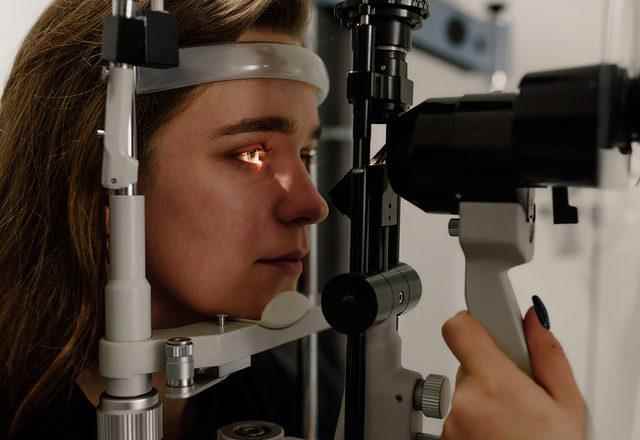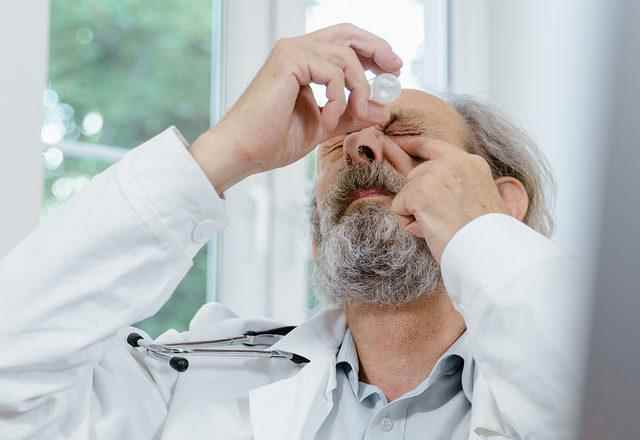Glaucoma, also known as glaucoma, occurs as a result of elevated intraocular pressure. If glaucoma is not treated, it causes vision loss. There are risk factors that increase glaucoma disease. The risk of developing glaucoma increases with age. To prevent glaucoma, it is necessary to visit a doctor regularly. Ophthalmology Specialist Dr. Suzan Karamete stated that glaucoma disease may progress insidiously in the eye and may not cause complaints in the first stages, and said, “Everyone over the age of 40 should definitely have a routine annual check-up, even if they do not have any complaints.”
Glaucoma is an insidious disease
Saying that the biggest problem in glaucoma is the late diagnosis, Ophthalmology Specialist Operator Dr. Suzan Karamete, “Glaucoma occurs due to the increase in the pressure of the fluid filling the eye. The increased fluid pressure inside the eye weakens and damages the optic nerve. The biggest problem in glaucoma is the late diagnosis of patients because we do not expect any finding in glaucoma in the first period. The patients do not experience pain in their eyes, do not experience redness, and do not suffer from glare. That’s why it’s an insidious disease and we actually notice it in routine examinations. That’s why early diagnosis is very important in glaucoma. Pointing out the importance of catching the disease in this period, since glaucoma does not show symptoms in the first period, Dr. Karamete said, “In the following periods, it causes damage to the optic nerve, which can lead to vision loss due to the weakening of the optic nerve. Peripheral visual field narrowing. “Patients lose their peripheral peripheral vision and have a visual field as if they were looking through a tunnel or pipe,” he said.
THE RISK IS INCREASED IF THERE IS GLAUCOMA NEARBY

Dr. Karamete said that one of the risk factors for the disease is glaucoma, which is located nearby at the first degree, and said, “We measure the eye pressure for the diagnosis of the disease, but we cannot diagnose it by measuring the eye pressure alone. In addition, we look at the corneal thickness, we make a detailed anterior segment examination of the patient. We do the examination of the back of the eye by dripping drops. In addition, we perform retinal nerve fiber analysis with visual field test and eye tomography, and sometimes we cannot diagnose this in one examination in the same session by analyzing all of them. We need to follow the patient with eye pressure and other findings for a certain period of time,” he said.
RISK INCREASE OVER 40 YEARS OLD

Mentioning that age is the most important risk factor for the disease, Dr. Karamete pointed out that although glaucoma can actually be seen from infancy, the risk factor increases significantly over the age of 40. Stating that another important risk factor is genetics, Dr. Karamete; “The risk increases at least 4 times in patients with a family history of first-degree glaucoma. We see a markedly increased risk of glaucoma in patients with high myopia, hyperopia, uncontrolled diabetes, hyper and hypotension, migraine, and patients who have received cortisone therapy for other diseases. The risk of glaucoma also increases in patients who have trauma to the eye.
THERE ARE VARIOUS TREATMENT METHODS

Stating that glaucoma diseases are diagnosed after the complaints of near-sightedness of people over the age of 40, Dr. Karamete stated that they started the treatment with drip treatments in the first step. Explaining that if one drop of treatment is not enough, they add a combined second drop, Dr. “Sometimes, if we do not get the result we want from the drop, we need to add laser treatments. The effect time of laser treatments is limited and we may need to repeat it. Again, if we do not get a response with these, we need to perform fistula surgeries or tube and implant surgeries. Early diagnosis is very important in this disease. We find it by chance in patients who come after the age of 40, when their near vision deteriorates, without any complaints and to get eyeglasses. Since it is an insidious disease, it does not give any complaints in the first period. That’s why, if we make an early diagnosis, we can treat the disease when we catch it at an early stage,” he said. Stating that in patients with late diagnosis, the loss of the optic nerve is progressive and permanent, they cannot reverse the outgoing nerve cells, Dr. Karamete said, “We only need to give treatment to slow down the disease in the next period. Even if there are no complaints, we recommend annual routine eye control to everyone after the age of 40.”
